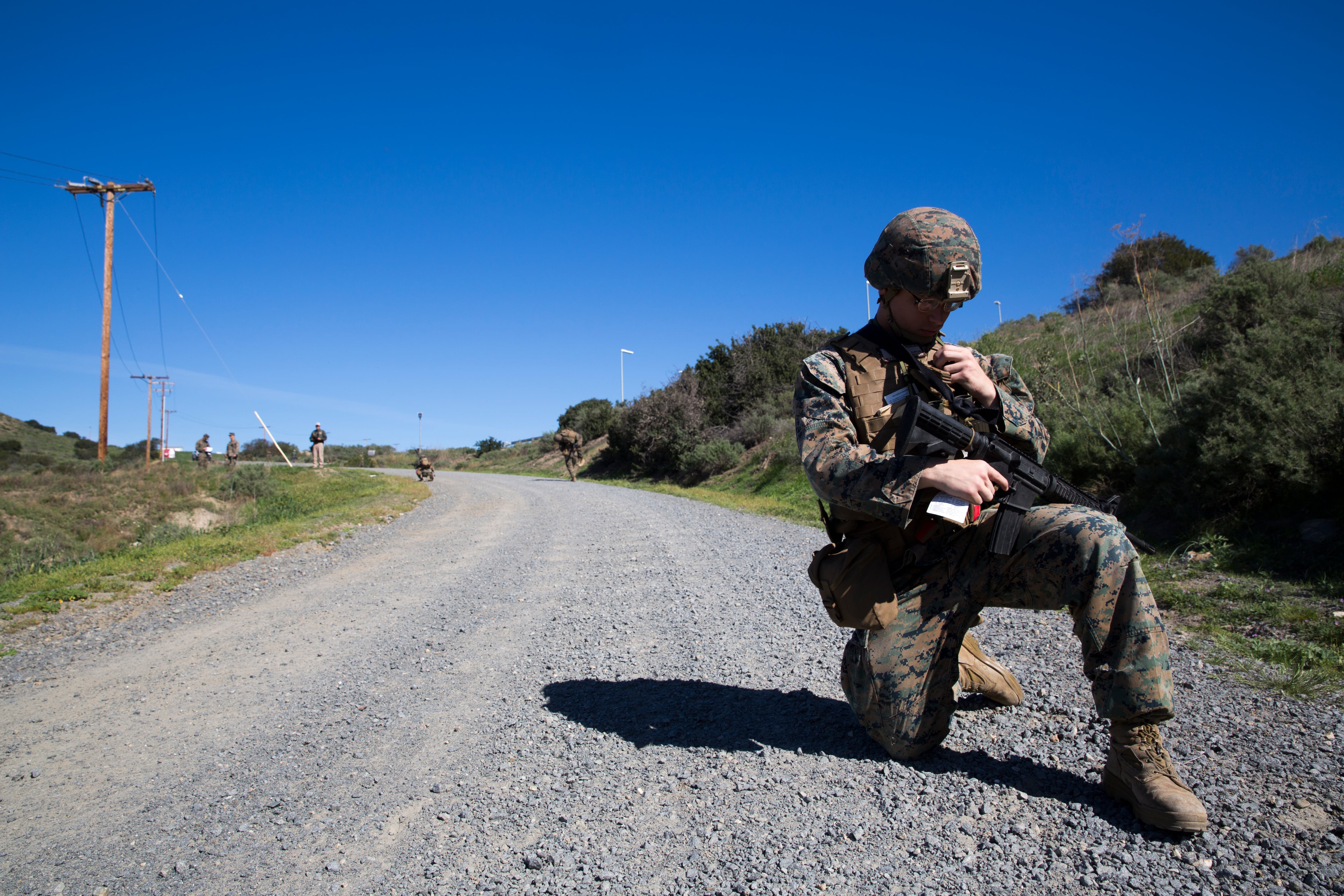With the counterinsurgency slog through Iraq and Afghanistan in the rear-view mirror, the Corps is retooling the way it trains Marines to deal with the threat of improvised explosive devices around the world.
The Marine Corps Engineer School recently developed a new, streamlined counter-IED course to provide deploying units with more hands-on training and up-to-date intelligence tailored to the geographic area to which they’re headed to.
A unit deploying headed to the Asia-Pacific region, for example, needs to know a different skill sets from one headed to the Middle East, said Maj. Mark George, officer-in-charge of the school’s Defeat the Device Branch.
"We can look at the [techniques, tactics and procedures] being used there now and articulate that to our students: The devices that they're using in a specific theater, how they've emplaced them and everything revolving around that," he said.
"We are continuing to evolve," George said. "The enemy is obviously evolving, and we’re taking steps to provide Marines and sailors with the very best training so they can learn the hard lessons up front before they step off to defend the nation," he said.
The new curriculum builds on lessons hard-learned lessons in Iraq and Afghanistan, but reduces the amount of classroom instruction in favor of time in the field practicing for counter-IED operations.
A recent report by Marine Corps Intelligence Activity highlighted IEDs as one of the most significant threats Marines will continue to face over the next decade as adversaries use 3-D printers to produce cheap, virtually undetectable IED components.
In Iraq, Marines are already squaring away against Islamic State militants who have developed an incredibly efficient supply chain to produce IEDs in bulk, according to a February report by the Conflict Armament Research group. Halfway around the world away in the dense jungles of Peru, Marines have trained local troops security forces to take on insurgents and cartels using which are increasingly using innovative IEDs to protect their production and trafficking of cocaine. IEDs were For pennies on the dollar to make, the IED - responsible for the vast majority of American casualties - became perhaps the most enduring symbol of insurgents' lethality throughout the wars in Iraq and Afghanistan. Yet the IED threat did not end with withdrawals from those countries, and their effectiveness was not lost on America’s enemies around the world.
Marines complete
Key to this is preparing Marines for battlefield conditions they'll experience downrange. The in the area they’re about to deploy to, and the school keeps a staff of analysts to monitor IED intelligence from around the world.

Lance Cpl. Janiel Gonzalez calls for a simulated casualty evacuation during the counter-IED training at Camp Pendleton, Calif.
Photo Credit: Cpl. Garrett White/Marine Corps
Marines deploying to the jungles of South America, for example, are more likely to face tripwires that set off IEDs than the pressure plates used in the Middle East, said Sgt. Jacob Strumjowski, a combat engineer with Alpha Company A, 1st Combat Engineer Battalion.
"Every place is different," he said. "[The course] focused a lot on what's happening nowadays with our current enemies as opposed to focusing on the past, so people are more prepared for what they might see in the future."
In February, Strumjowski and other combat engineers A Company ran through a pilot of the new course at board Marine Corps Base Camp Pendleton, California. As experts in explosive ordnance disposal, George said the Marines brought decades of combined experience dealing with IEDs to help improve the course, George said.
"We got some really good feedback," he said. "It was good to use the engineers because they have a really good baseline in [counter-IED] training, especially the experienced [noncommissioned officers], on how we can refine our processes."
Strumjowski said he had been through at least five counterC-IED courses, for example, and had instructed other units on several occasions. He said the new course is more streamlined and offers more realistic training before Marines deploy. As opposed to other training he’s received, the new course kept to the main points and got rid of a lot of marginal information, he said.
"Instead of learning everything there is about it, they just taught us the important things," Strumjowski said. "I really liked how we had hands-on training and actually learned how you would interact with an [explosive ordnance disposal technician]EOD or things like that when they passed your patrol."
In addition to Camp Pendleton, the Marine Corps Engineer School will offer the course in two other locations: SR-12 near Camp Lejeune, Holly Ridge, North Carolina, and Marine Corps Air-Ground Combat Center Range 800 at Twentynine Palms, California.
Mobile teams will also bring the training to Marines in Hawaii, Japan Okinawa and others places upon request if asked, George said.
"The more Marines train ... this kind of C-IED now, the less casualties and the less danger you’ll be dealing with, the more prepared they’ll be when they’re actually in combat zones," Strumjowski said. "For a Marine going to a combat zone, I feel like this class would be a great way to prepare them; it’s an amazing basic training in [counter-IED]."
Matthew L. Schehl covers training and education, recruiting, West Coast Marines, MARSOC, and operations in Europe, Africa and the Middle East for Marine Corps Times. He can be reached at mschehl@marinecorpstimes.com.





